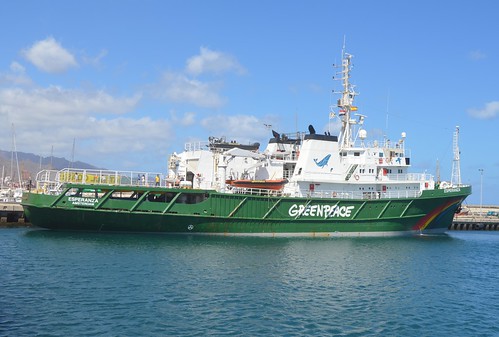
Battling for hearts and minds, the Greenpeace ship, Esperanza (Hope) welcomed a surge of curious visitors aboard on a three day stop over in Santa Cruz. But there was no sugar coating for their message of concern over the over active development and pollution of the Canary Islands in general, and Tenerife in particular.
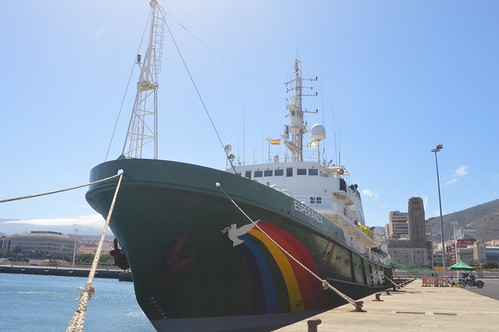
The crusading organisation was founded in Vancouver in 1971 and has always taken direct action against what it sees as assaults on the environment. Before I could skip up the gang plank, spokes person Paloma Nuche flicked through a thick report book full of findings from surveys into the ongoing state of land and sea through Spain, and pointed out some key figures relating to Tenerife. “ In the last 30 years, the growth of urbanisation has been 130% compared to the Spanish average of 105%. Canarian government records show that of 394 waste output points around the islands, 277 are not legal. In Tenerife 113 of 172 are not legal. ”
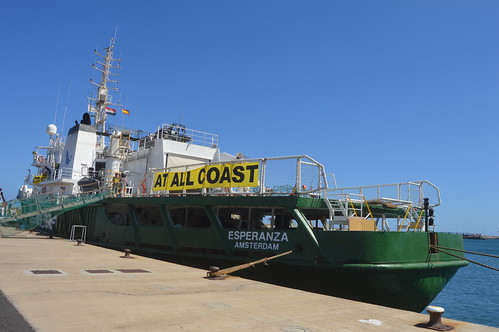
That last point had been brought home in the preceding week when the west coast Playa Chica in Puerto Santiago was closed for bathing due to a large stain floating in the sea. Then there´s also the on going drawn out legal cases against years of unapproved quarrying in Guimar, and countless cases of legal fights to close illegal building developments. All fuel to the Greenpeace cause. But the visit of the Esperanza was not just to raise red flags, it was also a chance to recruit further members and donations, Greenpeace point out that they don´t accept donations from political or economic organisations.
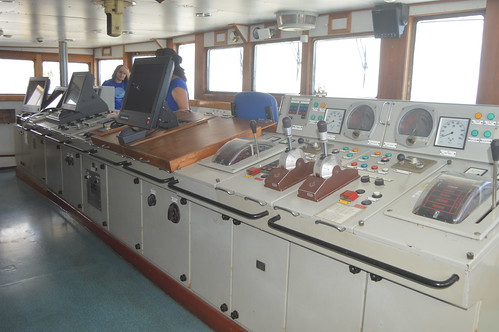
The ship struck a defiant note with its dark green livery and rainbow logo but I was keen to join the tour to find out more about the vessel. The biggest of three owned by Greenpeace, Esperanza was built in Gdansk, Poland in 1984 and worked for the Russian army fire service as well as seeing action in the arctic due to its ice breaking capabilities. Greenpeace bought it in 2002 and gave it an eco makeover, removing toxic paint, and replacing the original engines with electric motors capable of producing a speed of 16 knots. The bridge looked impressive with its mix of manual and digital controls, and as publicising and exposing unethical practices is part of the aim of Greenpeace, the communications are top notch, even on the high seas Wi Fi is always available.
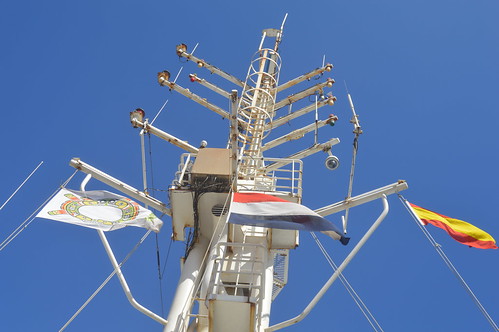
The full time 16 strong crew do long shifts of up to 24 hours at a time and rotate three months on board and three months off duty. The rest of the crew are volunteers, up to 35 at a time. As the ship can run into any situation, they have a heliport and sometimes hire a helicopter, monitoring illegal fishing was one use that called for the chopper. The Zodiac boats became famous in the early 1980’s when they tried to stop Spain from dropping nuclear waste barrels into the sea by diving the Zodiacs under them, photos of those encounters are displayed on the bridge. Esperanza also has four pneumatic boats, two of theirs saw action when confronting Repsol oil exploration ships off Gran Canaria in 2014.
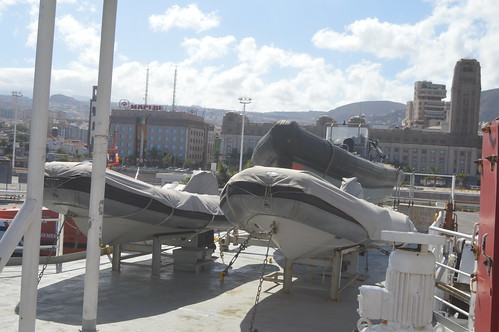
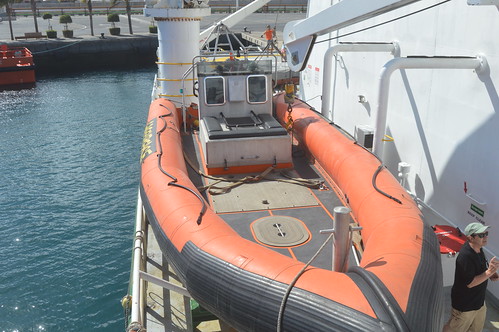
The stop off in Tenerife posed some uncomfortable questions, whether the right answers can preserve the unique qualities of the Canary Islands in time is down to radical changes in long standing habits. Meanwhile Greenpeace are not about to sail quietly into calmer seas.